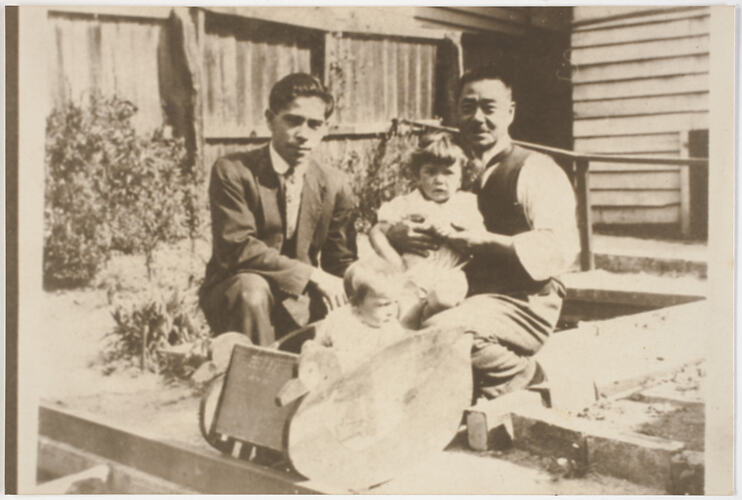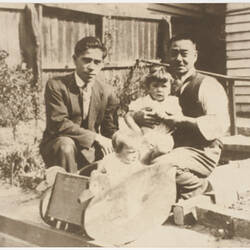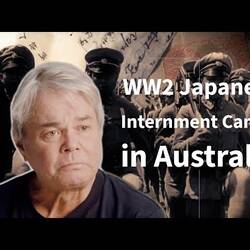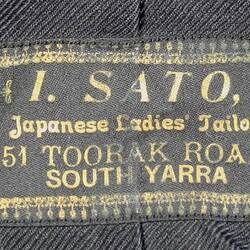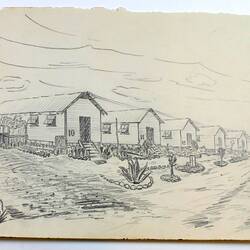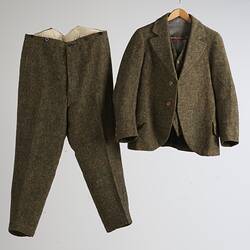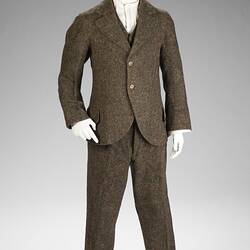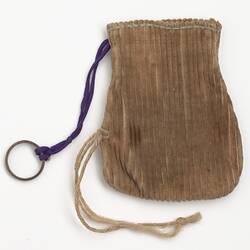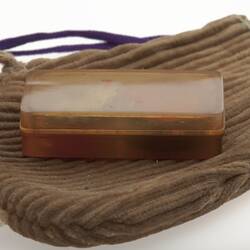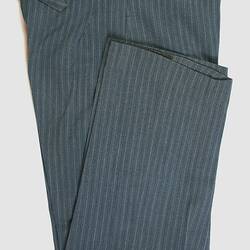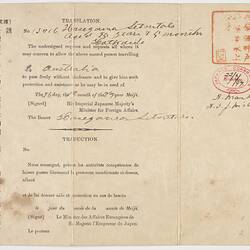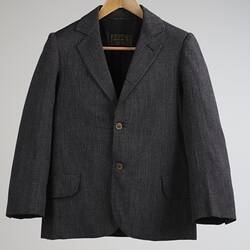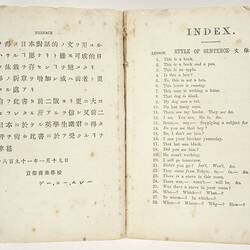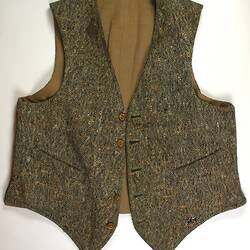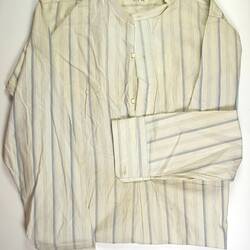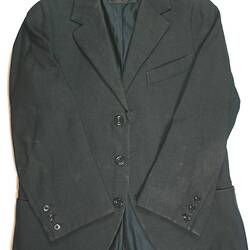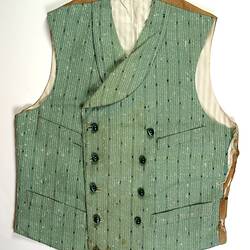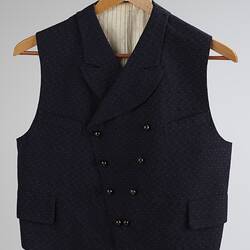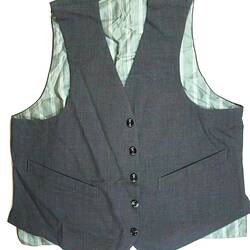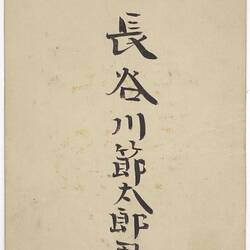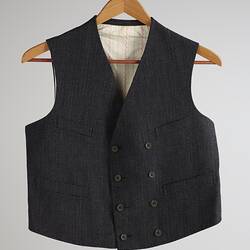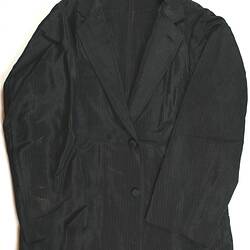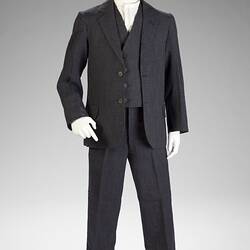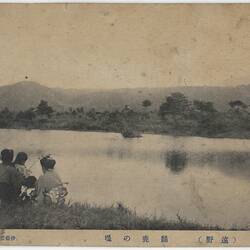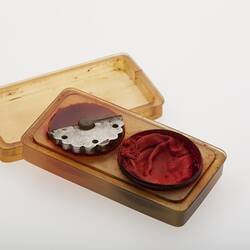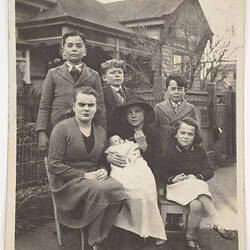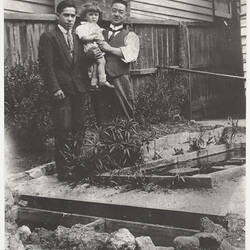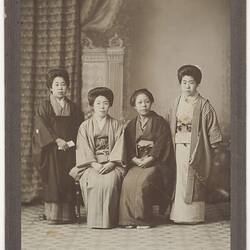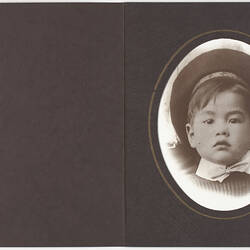Summary
Setsutaro Hasegawa migrated to Australian from Japan in 1897. He married, had children and established laundry businesses, but was arrested and interned as an enemy alien in 1941.
Early Years in Japan:
Setsutaro Hasegawa was born on 24 December 1871 in Japan. His father was from Honshu Island and his mother from Tokyo. The family moved to Otaru, on Hokkaido, during Setsutaro's childhood. An eldest son, he was raised under the expectation that he would care for his parents in old age and inherit the family estate.
Decision to Migrate:
Setsutaro was working as a school teacher when, at the age of 26, in February 1897 he decided to improve his English and head to Australia on the ship Yamashiro Maru. It was just four years before the introduction of the Immigration Restriction Act which severely limited migration to Australia from countries in Asia.
Early Years in Victoria:
He first worked as a domestic for Arthur Tuckett in Melbourne, known for exploiting his workers. In 1900 he became one of the proprietors of Sunrise Laundry in Prahran. He spent some time in Ballarat before establishing a laundry business in Geelong, where there was a small Japanese community, some of whom worked for his business. He would remain in the laundry industry throughout his life.
Marriage and Family:
In 1905 Setsutaro married Australian-born Ada Cole and they had three children: Leo Takeshi in 1906, Moto Kozo in 1907 and Joe in 1911. During this period the family moved to Ballarat where Setsutaro set up a laundry and he and Ada won prizes at poultry and dog shows.
It can't have been easy for the couple with prejudice against 'mixed' marriages common. Setsutaro was ineligible for naturalisation under the 1903 and 1920 Naturalisation Acts; records show he tried unsuccessfully applied for naturalization on 6 June 1913 when he was living at 28 Peel Street North, Ballarat East.
Ada left Setsutaro in
1914, leaving him to raise three children alone. He returned to Melbourne to
live with his tailor and friend Ichizo Sato in South Yarra, and later relocated
to Geelong to establish a laundry business and live with another Japanese friend,
Motoshiro Ito. Many photographs of Setsutaro show him wearing a Sato suit, an number of which are in the Museum's collection. Setsutaro had earlier gained his inheritance after the death of
his father but, to his family's likely consternation, never returned to Japan.
Home & Business in Geelong:
In 1927 Setsutaro purchased a house for 950 pounds at 21 Little Ryrie Street Geelong (100 pounds down payment with a one month interest free period to pay the balance). It was located behind his laundry business at 60 Ryrie Street, the two properties were separated by a lane. He had a car and was a man of means.
Letters from relatives in Japan scold him for not returning home, suggesting that his original intent may not have been to stay in Australia. Setsutaro maintained contact with Japan receiving a postcard and a Red Cross certificate from the 1920s, the latter suggesting he possibly made an aid donation to his homeland.
World War II:
In December 1941, Japan attacked Pearl Harbour and Japanese nationals in Australia were rounded up as enemy aliens. Setsutaro was interned at Tatura camp in northern Victoria when he was over 70 years old. He unsuccessfully appealed for release in 1942. This request was denied due to him admitting an affection for his fatherland and his obvious Japanese appearance; both of which would cause unrest in the Australian community.
However, following the release of another elderly Japanese internee, George Taro Furuya, and a petition by his son Leo, who was serving in the civilian military forces, Setsutaro was released from Tatura on 3 May 1943, on the grounds of his age and poor health.
From his release until the end of the war several restrictions were placed on his movement. He could not leave his home without permission from the Deputy Director of Security for Victoria, he could not associate or communicate with persons of enemy origin other than his own family, and he could not have a telephone or radio, which could receive long range broadcasts installed in his residence. These restrictions were placed on him as it was felt his 'presence in the streets of Geelong might affect public morale'.
Late Years:
Setsutaro was one of the very few Japanese interns who was not deported to Japan after the war. But his laundry had closed, things were tough and being Japanese had become an identity to hide. His eldest son Leo joined the Australian Army as an engineer from 1948 until 1960, having served in the civilian military forces from 1941-1948. Setsutaro Hasegawa remained in his home in Geelong, his family close by, until his death on 4 October 1952.
More Information
-
Keywords
-
Authors
-
Article types
